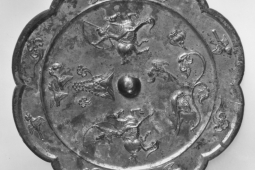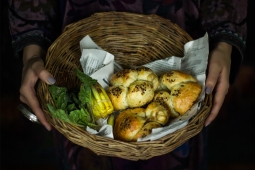Did You Know? Madagascar on the Maritime Silk Roads
©Adrien TantinFrom the 9th to the 12th century CE merchants from the Arabian Peninsula and Iranian Plateau began to embark on extensive trade with the East African coast, peaking between 1200 – 1500 CE. During this period ships crossed the Indian Ocean, Red Sea, and Persian Gulf carrying imported and exported goods along the maritime Silk Roads between the East Indies, China, Indian Subcontinent, Iranian Plateau, and East Africa. Exported materials from East Africa included gold, iron tools, ivory, tortoise shell, and rhino horn. These goods made it vast distances back to the Arabian Peninsula, to the Indian Subcontinent, and on to China, whilst imported cotton and glass-beads from the Indian Subcontinent, silk and porcelain from China, and pottery from the Arabian Peninsula entered Africa. This mercantile activity prompted the establishment of a number of city-sates on the East African coast in what is today Somalia, Kenya, Tanzania, and Mozambique, even linking into the Indian Ocean to the Island of Madagascar. This trade facilitated a great intermingling of cultures the results of which remain evident today, particular in the Swahili culture, but also in many others of the East African coastline.
Madagascar is an Island in the Indian Ocean around 250 miles off the South-eastern coast of Africa. Madagascar was probably first inhabited around 2,500 years ago when people arrived from Indonesia via the East African coast. Throughout its history the island has experienced waves of immigration from Africa, the Arabian Peninsula, the Iranian Plateau, and much later, from Europe, the Indian Subcontinent and China. As part of the maritime network of the Indian Ocean Madagascar served as a meeting point for much social and economic interaction between Africa and the regions encompassed by the Indian Ocean. It’s natural resources and location on this transoceanic trade, as well as on the coastal trade routes of East Africa, made it a cross-road for many different cultures.
The first literary references to Madagascar date from the 7th century CE when the Island was discovered by traders from the Arabian Peninsula, these earliest histories of the Island were written in the local language Malagasy using Arabic script. Arab settlements were established on the northwest and southeast of the island, some surviving ruins of which date to the 9th century CE. Once they reached the Island, Madagascar became an important transoceanic trading hub connecting the ports of the Indian Ocean with trading posts established along the northwest coast by the 10th century CE, along with this came the introduction of Islam and Arabic script which was used to transcribe the Malagasy language in a form of writing known as sorabe, Arabic astronomy and many other cultural elements such as the names for the seasons, months, and days were also introduced. Today the ruins of fortifications built by Arab traders in the 9th century serve as reminders of Madagascar’s important historical role as a destination for merchants and traders from along the Maritime Silk Roads.
Pottery and porcelain uncovered at archaeological sites on the Island, reveal potential contacts between China and Madagascar established as early as the 10th century CE. Goods from China such as porcelain and pottery were transported to the Arabian Peninsula and then onwards to East Africa. These findings would indicate contacts via Silk Roads trade between Madagascar and China which pre-date the 15th century CE journey of explorer Zheng He to the coast of Africa. Later, around 1500, European merchants arrived in Madagascar attracted by the high quality cotton, raffia palms, and silk textiles produced locally by skilled artisans. In the early 16th century accounts from Portuguese navigators reported the existence of a number of coastal towns in Madagascar which bore architectural similarities to Kilwa Kisiwani, the famous maritime entrepot in what is today Tanzania which was visited by the great scholar and Silk Roads traveller Ibn Battuta in 1330 CE. These towns in Madagascar were the result of the Arab mercantile network across the Western Indian Ocean. One of the largest of these towns was Vohemar, a trade settlement founded in the 13th century CE in the north east of the island which, as well as acting as a centre of Maritime Silk Roads trade, was home to its own distinctive arts and crafts traditions blending Arab, African, and Asian influences.
During the early Middle Ages, the Maritime Silk Roads expanded considerably thanks to technological advances in navigation, astronomy, and ship building, which combined to make long-distance sea travel increasingly practical for mercantile activity. As such lively coastal cities connected via the Indian Ocean grew up around the frequently visited ports along these routes, in East Africa these included Zanzibar, Kilwa Kisiwani, as well as sites in modern day Somalia, Kenya and Mozambique, and in the Indian Ocean, the Island of Madagascar. These in turn became wealthy centres for the exchange of goods, ideas, languages, and beliefs, with large markets and continually changing populations of merchants and sailors reflecting the many exchanges of the Maritime Silk Roads.









